Photographs by Romas FoordSnack recipes by Holly O’Neill
I remember my first spritz vividly. It was a rainy spring holiday in Venice and my soon-to-be wife and I had headed out to eat. What caught our eye instead was the outlandish drink that everyone was drinking outside the Caffe Rosso.
It was improbably red in colour, with an improbably green olive on a stick and it was like nothing we’d ever tasted: bitter and sharp; grownup yet playful; and so, so moreish. It was – commit this to memory, for it is a formula for happiness – 100ml white wine, 50ml Campari, 25ml fizzy water.
This quintessential Italian aperitivo has, in the intervening years, gone global, though it is the version made with Aperol and prosecco that has become standard, seen everywhere from The White Lotus to your local Wetherspoon’s. The Aperol spritz is truly one of the marketing sensations of the century, helped in no small part by its instantly recognisable bright orange colour.
Nevertheless, I’ve sensed the beginnings of Aperol spritz ennui – a thirst for variations. The original Venetian spritz, made with Campari or (more properly) Select, has begun to reassert its primacy. The northern Italian hugo spritz, made with elderflower liqueur, has been steadily building a following, and last summer in Capri, the limoncello spritz seemed to be everywhere. The basic formula allows for endless versions. The negroni sbagliato, for instance, is just a spritzified negroni, with the gin subbed for champagne.
Prosecco has become usual, but the Venetian spritz is traditionally made with still white wine, specifically local soave, for its crisp, refreshing acidity. Anything too lemony or oaky won’t work.
As for the liqueur, Aperol is approachable, though a little sweet for my taste. Campari and Select have more of the essential bitterness, while other amari (such as Cynar or Averna) will earn you hipster points. You can also spritz with a sweet liqueur – apricot, blackcurrant, elderflower, etc – but I’d recommend a couple of shakes of Angostura, or perhaps cutting the wine with dry vermouth to retain its herbal intrigue.
You can add spirits if you must, though not too much – this is light and easy drinking. Don’t neglect that fizz of water, which tips it to refreshing, not cloying. Spritzes are prudently served in tumblers – it’s easy to overturn a heavy wine glass.
But perhaps the most crucial spritz variable is the timing. As an aperitivo, it is designed for late-afternoon drinking, ideally accompanied by a plate of delicious salty things and a sigh as you forget the troubles of the day.
Watermelon spritz
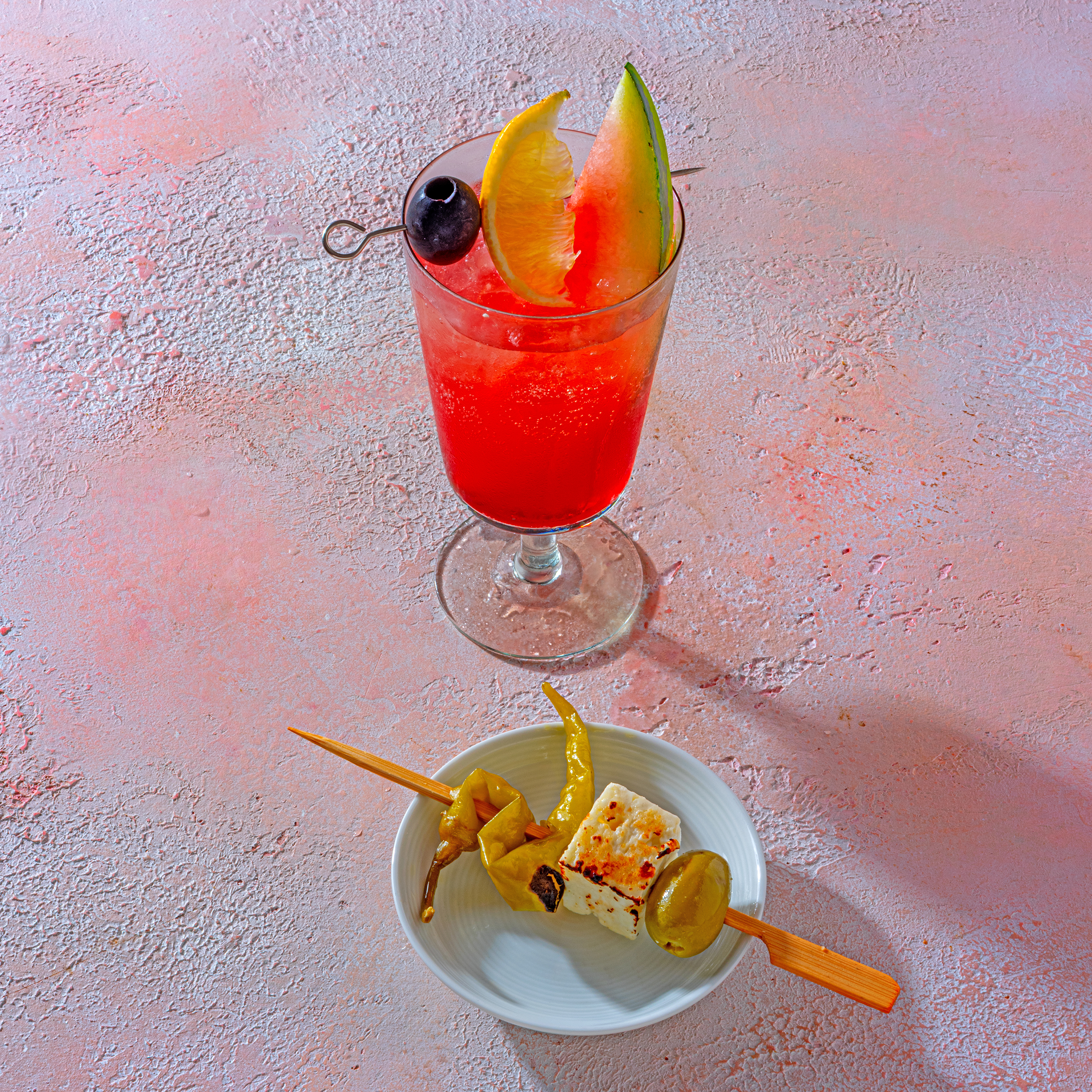
You can buy watermelon juice in cartons, but it’s simple to juice yourself. One way is to use a blender and then strain. A more lo-fi method is to place a sieve over a bowl, cut a few slices and grate them against the mesh. Absinthe isn’t to everyone’s taste, but I promise a little tear of anise in this is sensational.
Makes 1 spritz
Campari (or Aperol) 30mlwatermelon juice 60mlprosecco 60mlsparkling water 30mlabsinthe/pastis a dash (optional)to garnish black olive, lemon slice, watermelon slice
Fill a glass with ice cubes and add the ingredients one by one, stirring all the while. Garnish with a lemon slice and a black olive and a sliver of watermelon, if you fancy.
Snack ideaWatermelon loves salty cheese. Spear a cube of halloumi, a stoned green olive and a small pickled chilli on a cocktail stick. Pan-fry in a little oil, turning so the halloumi is golden-brown all over. Drizzle with a little honey (optional), a good squeeze of lemon juice (not optional), and scatter with nigella and/or sesame seeds.
White negroni sbagliato
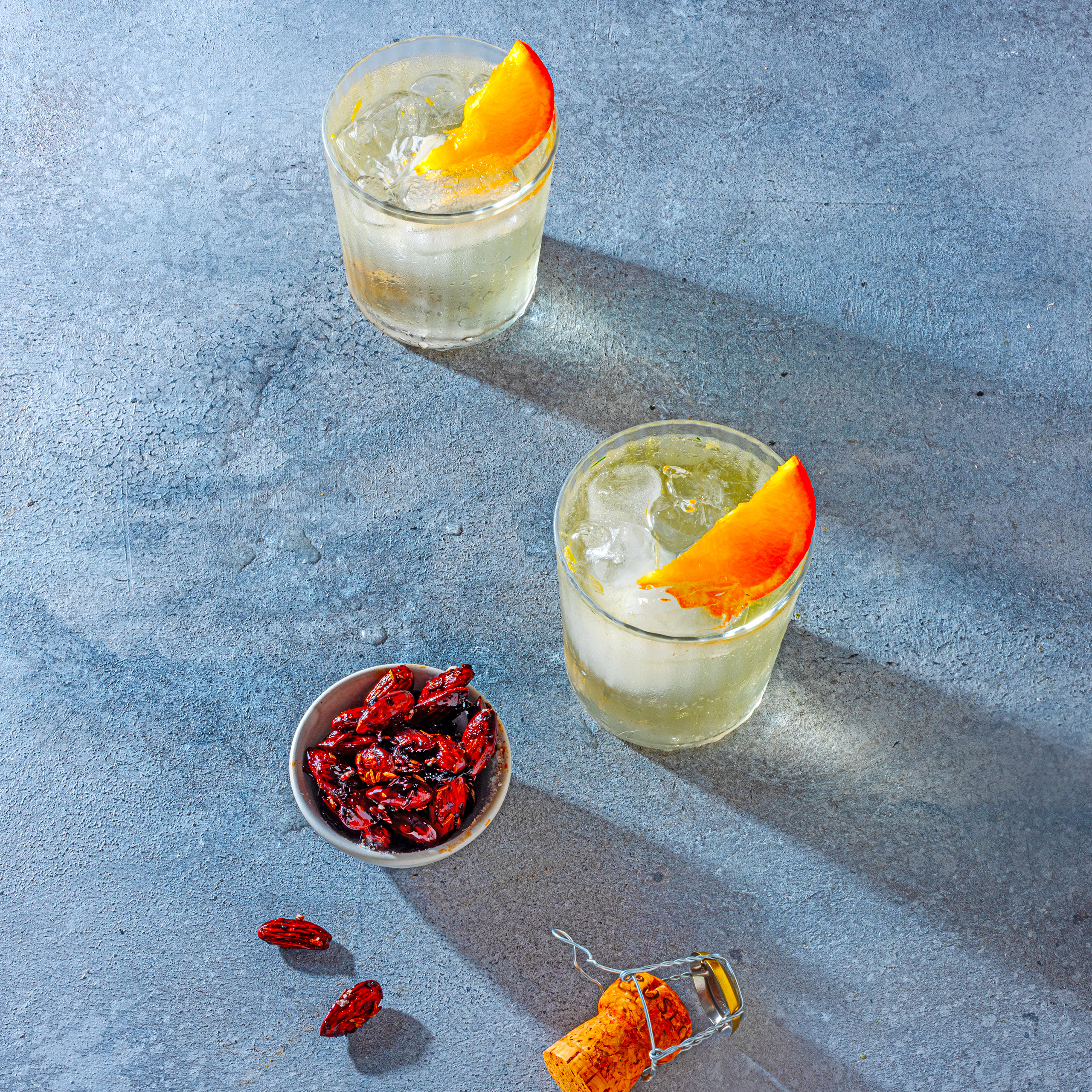
The white negroni is a popular variant on the classic Italian cocktail, substituting the traditional Campari and red vermouth for the French ingredients Suze and Lillet Blanc. (Suze is a bitter gentian liqueur from the French Alps with a pronounced peppery taste, a little like Campari in a minor key; Lillet is a bright aperitif wine similar to sweet vermouth.) It can be spritzified with a little sparkling wine. Cremant de bourgogne might be appropriate here.
Makes 1 spritz
Suze 25mlLillet Blanc (or sweet white vermouth) 25mlcremant 100mlsparkling water 25mlorange and lemon slices to garnish
Fill a glass with ice cubes, add all of the ingredients and give it a good stir. Garnish with lemon and/or orange slices.
Snack ideaRoasted nuts are always a good idea, and pretty much any flavour combo works. We're quite into almonds tossed with ground cumin, cayenne or smoked paprika, lots of salt, pepper, pomegranate molasses and strips of lemon peel and roasted at 160C fan/gas mark 4, turned occasionally, watched carefully, till fragrant and crunchy.
The carousel
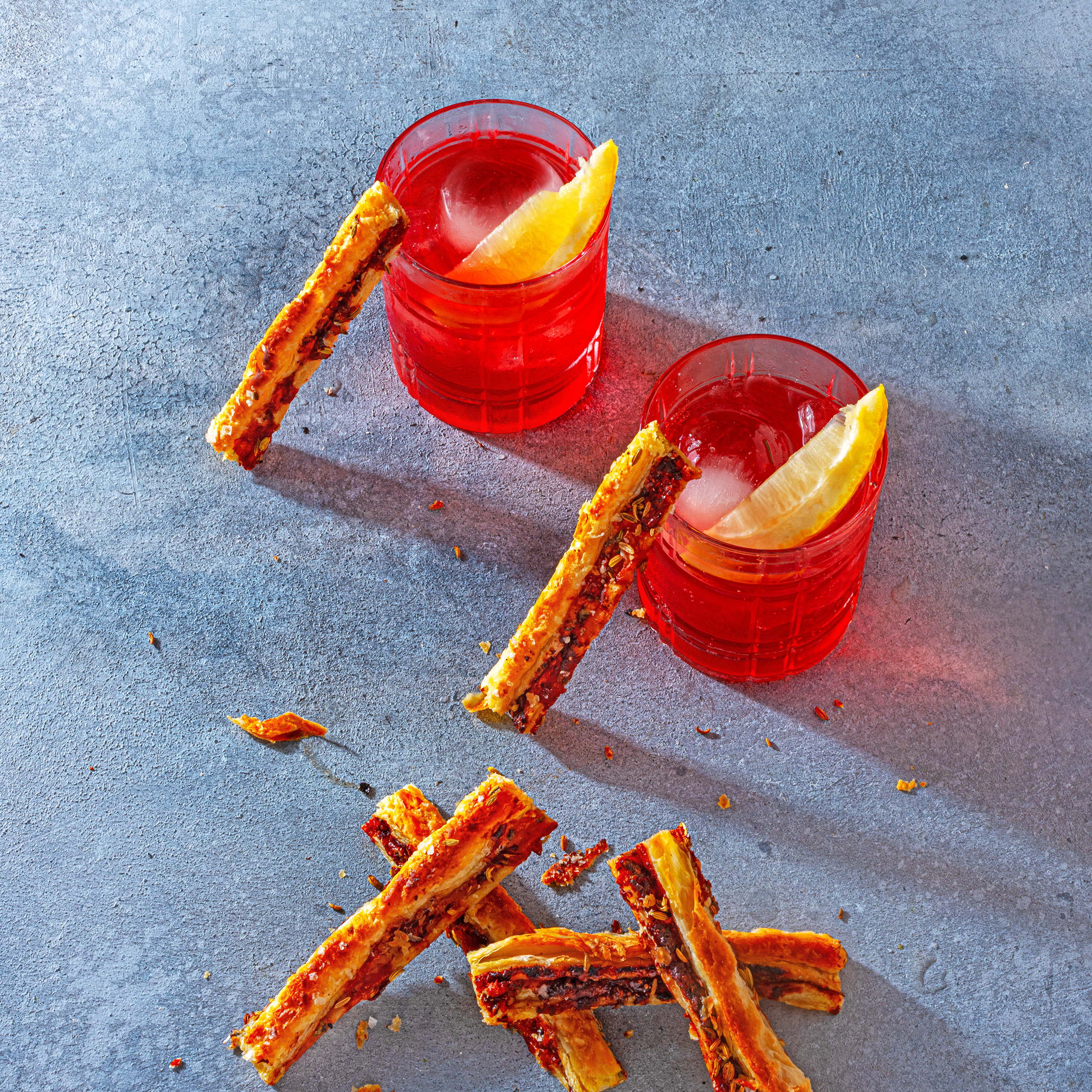
We have the Italian futurist painter Enrico Prampolini to thank for this avant-garde red wine spritz from 1931. He named it la giostra d’alcol – the carousel of alcohol. He called for barbera d’asti (but any medium-bodied easy-drinking red will do) and for cedrata, a soft drink made from the citron, which is like a bitter lemon. Tassoni is the most popular brand in Italy, but a decent lemonade (or grapefruit soda) will make a good substitute.
Makes 1 spritz
medium-bodied red wine 60mlcedrata or lemonade 60mlCampari 30mlsugar syrup 5-10ml (to taste)lemon a slice
Stir all of the ingredients with ice in a tumbler and garnish with lemon. The traditional accompaniment is gorgonzola and dark chocolate.
Snack ideaFor futurist cheese straws, take a sheet of puff pastry and smear half scantly with fig jam or relish and the other half generously with gorgonzola. If you are feeling futurist, add a light scattering of finely chopped very dark chocolate (not essential but not as weird as you think). Bring the halves together and press firmly. Brush with olive oil, scatter with sea salt flakes and bashed-up fennel seeds; slice into 1-1.5cm strips. Bake at 180C fan/gas mark 6 for 10-12 minutes, or till golden and crisp.
Hugo spritz
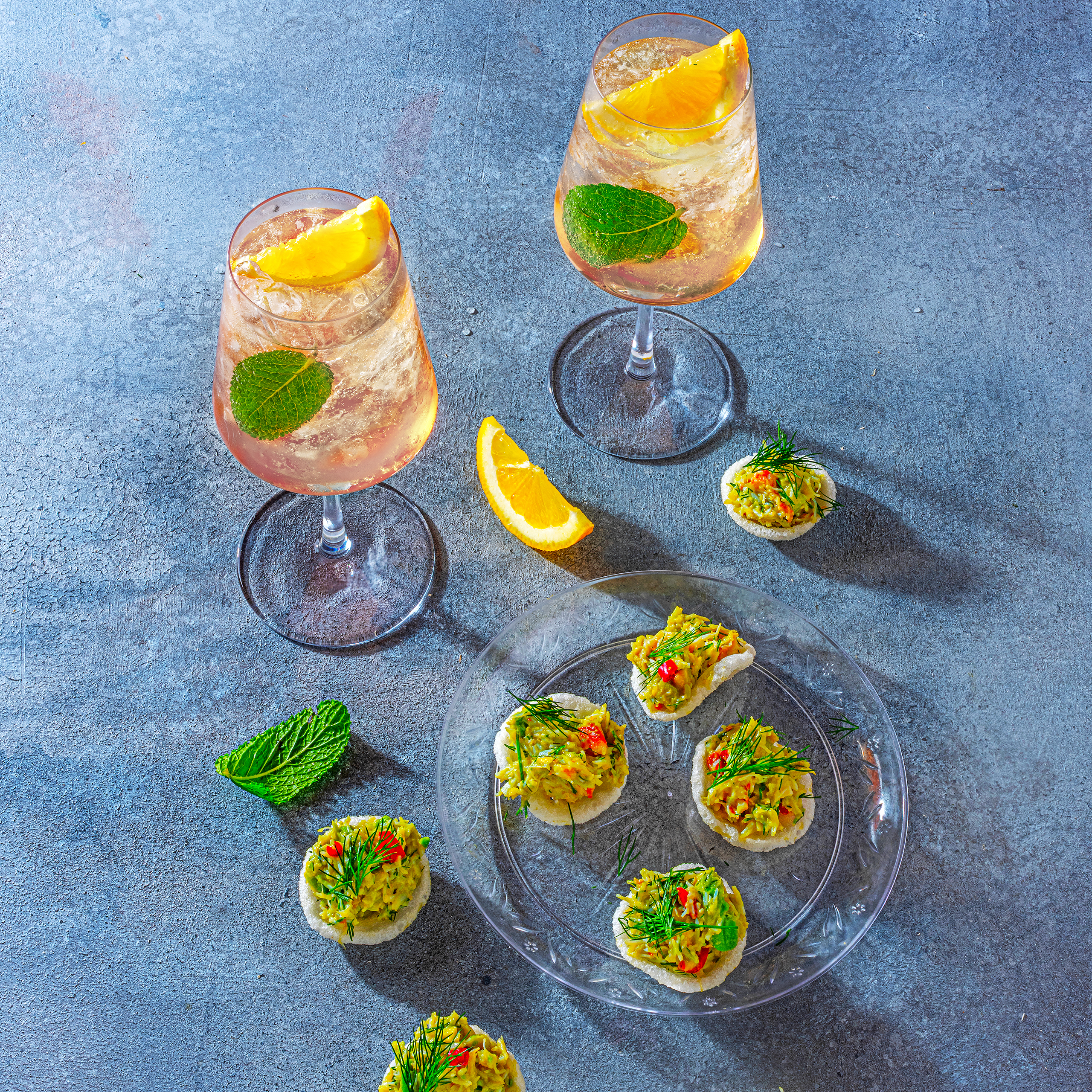
The hugo is a regional staple from Tirol that is increasingly seen all over Italy. If you’ve no elderflower liqueur, you can always use 15ml elderflower cordial plus 15ml gin or vodka. For me, it’s improved by a dash of Angostura bitters.
Makes 1 spritz
mint a few leaveselderflower liqueur (eg St Germain) 25mlprosecco 100mlsparkling water 25mlAngostura bitters a dash (optional)lemon a slice
Slap the mint to release the aromas and place in a wine glass. Pour over the liqueur, then fill the glass with ice. Add the prosecco, water and bitters, give it a quick stir, and garnish with lemon.
Snack ideaCrab on a cracker! Favourite exclamation or excellent snack? Grate ginger, garlic and lemongrass and sizzle with chopped chilli in oil till fragrant. Leave to cool, then stir into picked crabmeat and smashed avocado (use creme fraiche if you prefer). Season with finely chopped dill, salt or fish sauce, and lime juice to taste. Serve on prawn crackers.
Richard Godwin’s drinks Substack is The Spirits
Spritz to go – three we love
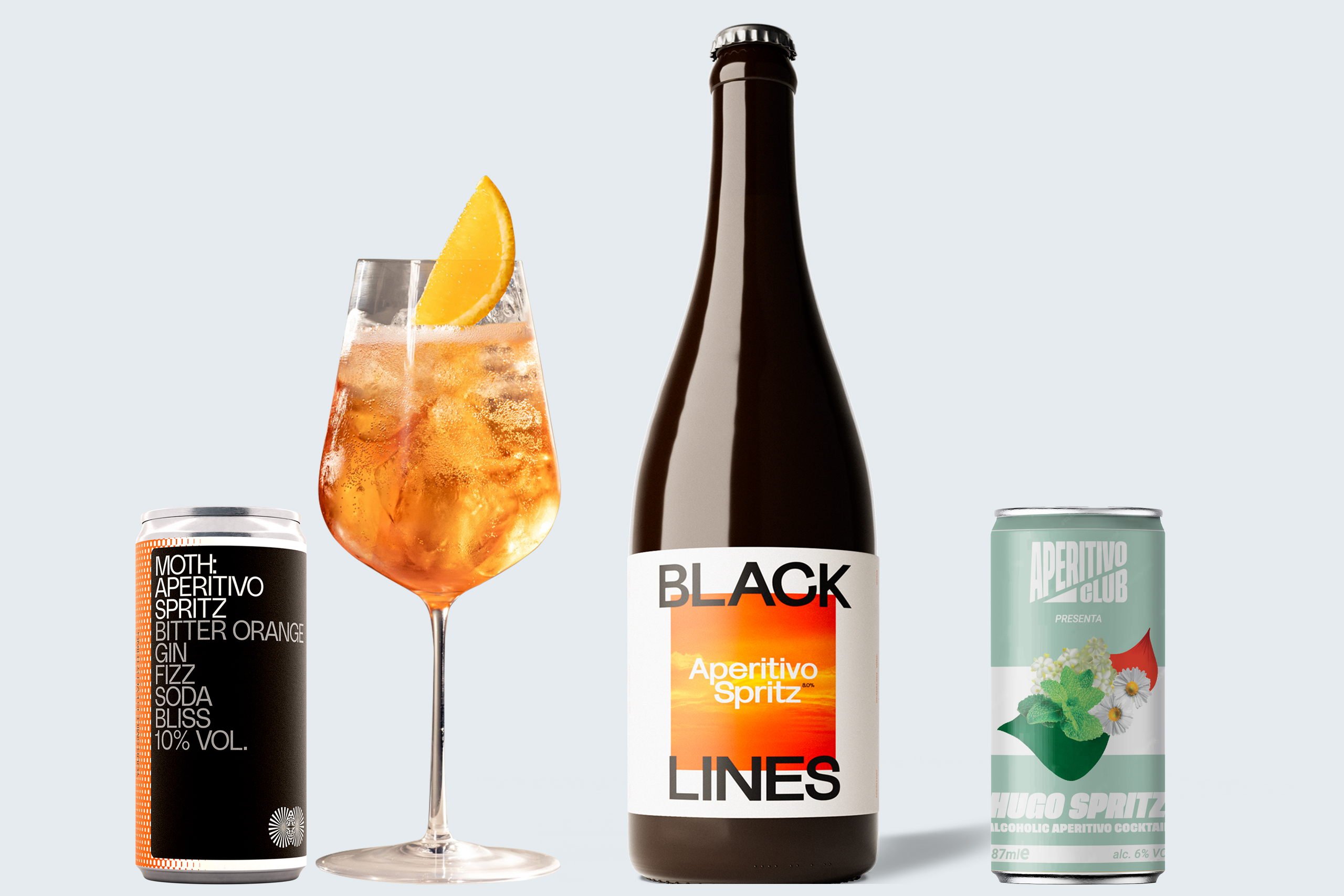
Black Lines apertivo spritzFor our money, and it’s had plenty of it, Black Lines makes the best bottled cocktails on the market. New from the brand, this has a perfect bitter/sweet balance, bright but slightly rich. £19 (750ml), blacklinesdrinks.com
Aperitivo Club hugoWe love its floral bellini, but the hugo edges it – it nails the fresh mint zing (few do). £3.99 (187ml), aperitivo.club, delli.com
Moth aperitivo spritzOf the many Moth cocktails, this is one we reach for most often – fun for an impromptu park sundowner. From £3.25 (200ml), mothdrinks.com, supermarkets
